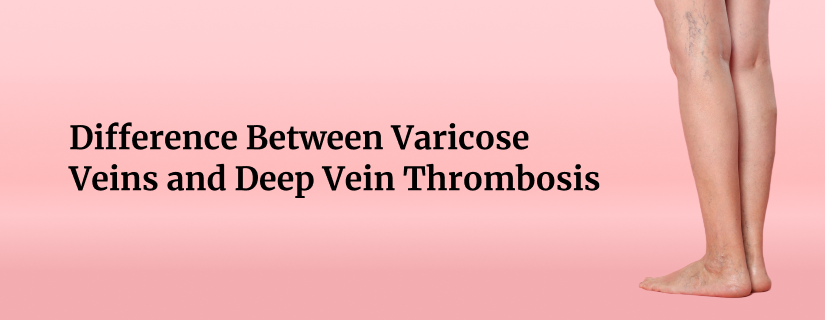Varicose veins and deep vein thrombosis are two commonly occurring vein conditions. Because they share some similarities, most people confuse these terms. However, there are several differences between them.
Varicose veins usually affect superficial blood vessels near the skin region, while deep vein thrombosis is a health condition of veins that are located deeper. Understanding the difference between these two venous issues is vital to get the right treatment.
If you want to learn more, keep reading. This article will shed light on the differences between varicose veins and DVT you must know.
Top 5 Differences Between DVT and Varicose Veins
Despite the common belief, a lot of differences occur between deep vein thrombosis and varicose veins. The formation of blood clots in the deeper veins is called DVT, while the weakening, twisting, and bulging of superficial veins is called varicose veins.
The dissimilarities also occur among other factors, such as causes and treatments. Let’s discuss the top five differences between DVT and varicose veins.
1. Fundamental Difference
In the past, people used to think that deep vein thrombosis was just another name for varicose veins. However, with the advancement of technology, it became clear that these two venous diseases are not similar.
Deep vein thrombosis, otherwise known as venous thromboembolism, happens when blood starts clotting in deeper veins. This condition usually targets the pelvis, leg, or thigh areas. But it does not mean that it cannot appear in any other body part.
The onset of varicose veins, also called varicosities, begins when superficial veins become swollen and enlarged. The frequent twisting causes immense discomfort. If untreated, this condition can give rise to more severe health issues. People book appointments at varicose veins treatment Dubai based clinics to get rid of this issue.
2. Causes
The causes of varicose veins are different than those of deep vein thrombosis. Some of the most important ones are mentioned below:
- Damaged or weakened valves
- Hormonal imbalance
- Unhealthy aging process
- Standing for an extended period
On the other hand, causes of deep vein thrombosis include:
- Blood clotting
- The use of catheters for a long time
- Excessive production of blood cells by bone marrow
- Poor blood circulation in deep body areas
Sitting for a longer duration during a long-distance journey or immobility due to surgical reasons can also stimulate the onset of DVT.
3. Risk Factors
Risk factors are the elements that decide whether a person is more susceptible to a health condition. Deep vein thrombosis and varicose veins also differ in their risk factors.
Varicose veins have risk factors that are different from DVT. For instance, the risk of varicosities increases due to family history, smoking, obesity, pregnancy, and hormone replacement. This disease is also more common in females.
On the other hand, risk factors of DVT include immobility, genetic predisposition, surgical treatment, injury, heart problems, history of pulmonary embolism, and Crohn’s disease.
4. Symptoms
Like causes and risk factors, deep vein thrombosis, and varicose veins show varying symptoms. The signs of varicose veins might be less severe than those of DVT. However, the overall condition varies from person to person.
Let’s have a look at what kind of symptoms varicosities show:
- Change in the color of superficial veins
- Protruding and twisted appearance of veins
- Feeling pain or heaviness in the legs
- Itchy sensation around the affected vein
- Difficulty sitting or standing for longer duration
On the other hand, you might want to look for the following signs in the case of DVT:
- Unbearable pain in the calf region
- Hot sensation in the affected area
- Reddish or bluish appearance of the skin
- Onset of edema
- Painful feelings on touching the affected region
It is noteworthy that these differences might be difficult to differentiate. Therefore, whenever you encounter any of the above symptoms, visit a reliable clinic.
5. Treatments
Treating DVT and varicose veins is not challenging. All you have to do is follow your physician’s guidelines and change your existing lifestyle. Like other elements, differences also exist between the treatment methods of deep vein thrombosis and varicosities.
When it comes to DVT, your doctor will first check the severity of the condition. Later, they will prescribe a suitable treatment depending on the diagnosis. Common treatments for deep vein thrombosis are:
- The usage of anticoagulants or the medicines that prevent blood clotting
- Surgical removal of the blood clots that are causing the problem
- Use of Inferior vena cava filter
A range of treatments exist for varicose veins, including both surgical and non-surgical procedures. The most effective one is sclerotherapy, a non-invasive process. You can book an appointment at varicose veins treatment Dubai based polyclinics to opt for this procedure.
Takeaways
Differences between varicose veins and DVT are obvious. These two venous conditions can vary in causes, risk factors, symptoms, and treatments. So, you cannot confuse varicosities with deep vein thrombosis. If you want to get rid of varicose veins, contacting a reliable clinic would be an informed decision.
Read more: Brightening Power of Vitamins in Skin Care

